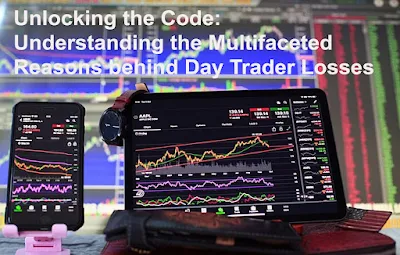Introduction
Are you ready to dive into the thrilling world of event day
trading? In this article, we'll explore the exciting and potentially lucrative
realm of event-driven trading strategies. From understanding the basics to
mastering advanced techniques, we'll guide you through the journey to explosive
profits. So, let's get started with this article, where we'll unravel the
strategies, risks, and rewards associated with event day trading.
Understanding Event Day Trading
What is Event Day Trading?
Event day trading, also known as news trading or catalyst trading, involves capitalizing on price fluctuations in financial markets triggered by specific events or news releases. These events can range from earnings reports and economic indicators to geopolitical developments.
The Significance of Timing
Timing is everything in event day trading. Traders aim to
enter and exit positions swiftly, often within minutes or hours, to profit from
short-term market reactions. This approach demands precise decision-making and
a deep understanding of market sentiment.
Strategies for Success
Stay Informed
To succeed in event day trading, you must stay well-informed about upcoming events and news releases. Utilize financial news platforms, calendars, and social media to track relevant information. Being ahead of the curve can provide a significant advantage.
Volatility Analysis
Events can lead to increased market volatility. Analyze
historical data to gauge how similar events impacted prices in the past. This
analysis can help you anticipate potential price movements and set realistic
profit targets and stop-loss orders.
Risk Management
Event day trading can be highly volatile and risky. It's
crucial to establish a risk management strategy that includes position sizing,
stop-loss orders, and risk-reward ratios. A disciplined approach can protect
your capital during adverse market conditions.
Technical Analysis
Combine event analysis with technical analysis to make
informed trading decisions. Technical indicators and chart patterns can help
you identify entry and exit points. The synergy of these two approaches
enhances your trading precision.
Continuous Learning
The world of finance is dynamic. Keep honing your skills
through continuous learning. Attend webinars, read books, and follow seasoned
traders to gain insights and improve your strategies.
Risks and Rewards
The Potential Rewards
Event day trading offers the potential for substantial
profits in a short period. Successful trades can yield significant returns,
making it an attractive option for traders seeking quick gains.
The Risks Involved
However, with great rewards come great risks. Event day
trading is not for the faint of heart. Market reactions can be unpredictable,
and a single wrong move can result in substantial losses. It's vital to be
mentally prepared for both ups and downs.
Conclusion
In conclusion, event day trading can be a thrilling and
profitable endeavor if approached with the right strategies and mindset. To sum
it up, we've explored the basics of event day trading, including its
significance, strategies for success, and the associated risks and rewards.
Remember that successful event day trading requires a
combination of skills, discipline, and continuous learning. Stay informed,
manage your risks, and always be prepared for the unexpected.
So, are you ready to embark on your event day trading
journey? The world of explosive profits awaits those who dare to enter the
realm of event-driven trading. Happy trading!






